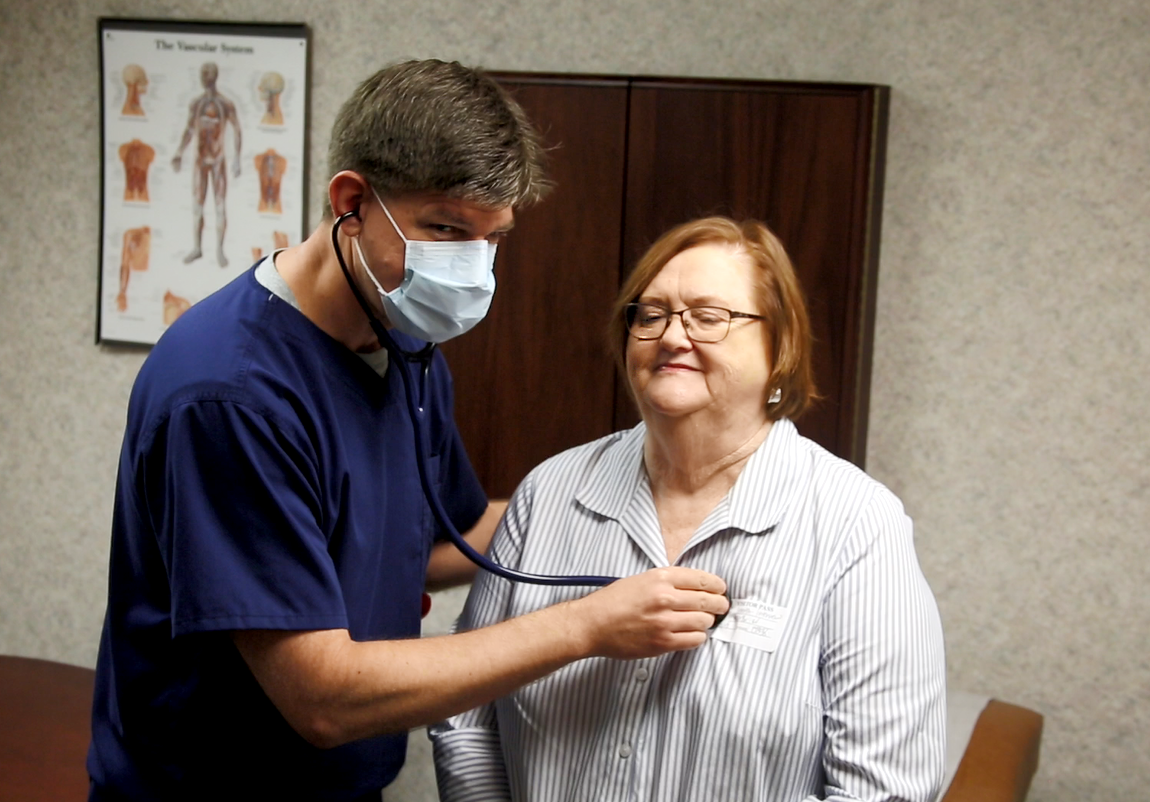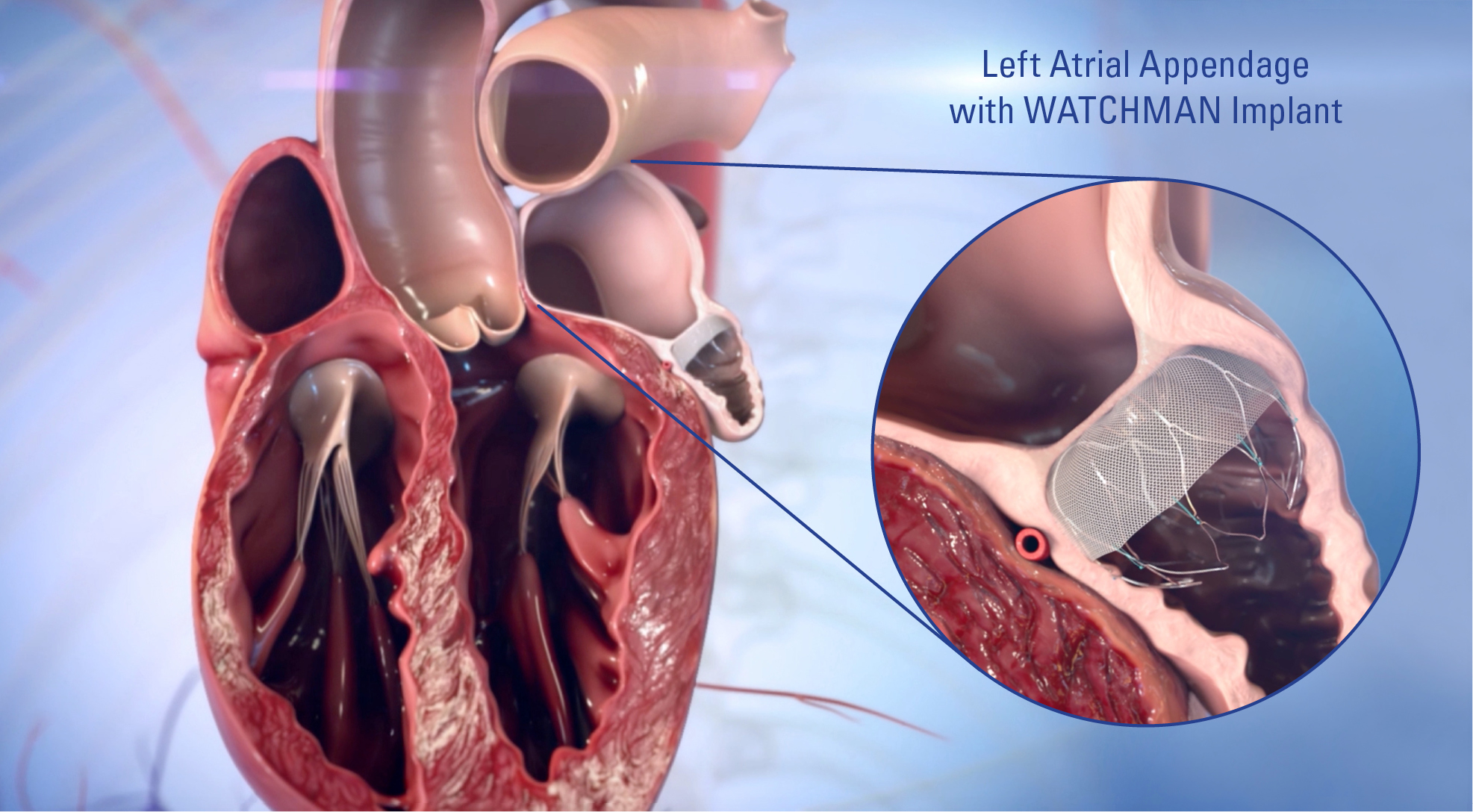Blog Post
Watchman: Reducing Stroke Risk in AFib Patients
August 17, 2020
At least 2.7 million Americans are living with atrial fibrillation (AFib), according to the American Heart Association.
At least 2.7 million Americans are living with atrial fibrillation (AFib), according to the American Heart Association. AFib, affects the heart’s ability to pump blood normally and causes blood to pool in the left atrial appendage and potentially clot. Some patients are prescribed blood-thinning medications, such as coumadin, to prevent a blood clot, but patients who have a bleed risk are at a higher danger when taking blood thinners.
Closing the left atrial appendage is another way to reduce the possibility of a blood clot and a stroke. The Watchman implant is a permanent device that does just that. The procedure is for people who are high risk and have AFib not caused by a heart valve problem and need an alternative to blood-thinning medications
Several score tests are conducted to calculate the patient’s risk of stroke or if they are a bleeding risk. A transesophageal echo is also performed to view and measure the heart. During the Watchman procedure, the physician makes a small cut in the patient’s upper leg and inserts a narrow tube through the femoral artery. The physician then guides the implant, which is the size of a quarter, into the left atrial appendage of the heart.
The 30- to 90-minute procedure is done under general anesthesia, and the patient is kept overnight for observation. Forty-five days after the procedure, another transesophageal echo is conducted to see if the skin has started to grow over the implant. If it has, the patient’s medication is deescalated, and the patient is put on Plavix for six months. Eventually the patient will be placed on an aspirin regimen.
The Watchman procedure is a team approach. Freeman cardiologists, Dr. Ryan Longnecker, Dr. John Swartz and Dr. Darwin Jeyraj took a special training course offered by Boston Scientific to learn how the device is placed. The team from Boston Scientific also came to Freeman to tutor the cardiologists as they went through the initial install process.
Learn more about Freeman Heart & Vascular Institute and Freeman cardiologists here.

Dr. Ryan Longnecker, Freeman interventional cardiologist (left) listens to the heart of his patient Jane Smith. Smith had the Watchman procedure done in March 2020 at Freeman Heart & Vascular Institute.

Photo courtesy of Boston Scientific.